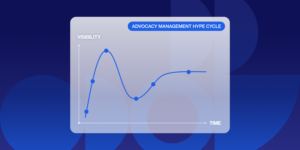Dr Bibek Debroy, Chairman, Economic Advisory Council to Prime Minister Narendra Modi, projects that India will grow comfortably at a real rate of 7.5% to pass through the upper-income category and approach the high-income status by 2047.
Dr C Rangarajan, former Chairman, Economic Advisory Council to Prime Minister, calculates that India would need to grow at a real rate of 6.18%-6.74% to achieve the status of a higher-income country by 2047. Both economists arrive at similar numbers though they take different starting figures and currencies to project their calculations in their papers on macroeconomic essentials.
Twenty-three renowned economists have detailed their roadmap to India 2047 in the book ‘India 2047 High Income with Equity’, put together by Sameer Kochhar, Chairman, SKOCH Group, Reforms Historian and Author of ModiNomics.
Kochhar says, “It has always been my attempt to grasp the full magnitude of the direction given by the Prime Minister and translate it into an action agenda by garnering the best available expertise in the country to make the ‘how’ of the idea more widely understood. This becomes a great reference point for policy making and effective implementation.”
Prime Minister Modi will likely highlight his vision of the roadmap of Amrit Kaal during the forthcoming meeting of Governing Council of the NITI Aayog on May 27, 2023. The book is also being released and discussed on the same day at Dr Ambedkar International Center in New Delhi.
“Over the next 25 years, India needs to strengthen its parliament and make systems more resilient. Sameer’s book is an apt commentary that suitably covers all aspects of cooperative federalism and provides a lucid prescription of what needs to be done by learning from our past lessons,” says Dr Vijay Kelkar, Chairman, 13th Finance Commission.
The book highlights the need for better credit availability for MSMEs and other vulnerable sections to achieve spatially dispersed, job-generative, and equitable growth. The book provides policy prescriptions for structural transformation, increasing employment formality, Infrastructure and financing and the use of Digitalisation for inclusive growth.
While talking about the book, N K Singh, Chairman, 15th Finance Commission says, “This volume contains an in-depth analysis of significant policy issues in addressing contemporary challenges, high growth coupled with fiscal consolidation, and reconciling the dichotomy between inclusiveness and inflation management with macroeconomic stability. It brings together domain experts over experience, skill, and understanding.”
Kochhar added, “My earlier books, ModiNomics, Defeating Poverty, and Modi’s Odyssey: Digital India, Developed India have served this purpose as well.”
Pre-COVID-19, India had set a target to become a $10 trillion economy by 2030, the action plan for which was outlined in Mr Kochhar’s earlier volume, ‘India 2030’, released in December 2018. This emphasised the need for quality growth that is job-generative, spatially dispersed, and equitable.
The current volume aims to review progress and make recommendations to bridge gaps in line with the new target date and objectives. It also discusses the macroeconomic essentials required to make India a high-income country with equity.
The book ‘India 2047’ deals with macroeconomic essentials and emphasises the need for structural transformation, organising the labour markets, increasing competitiveness, enhancing financial and social inclusion with equitable growth, the role of federalism in inclusive growth, imperatives for job generation and the importance of infrastructure development and financing.
Dr Debroy writes in his paper ‘India in 2047: Looking Back and Looking Forward’: “In that transition to 2047, it will pass through the upper-middle-income category and approach the high-income status presently defined as more than US$ 12,695. This will have implications that are impossible to completely grasp today. Poverty levels will decline sharply. There will be socioeconomic churn.
Since the GDP is an imperfect measure, the United Nations Development Programme (UNDP) has evolved the notion of the human development index (HDI), based on per capita income, life expectancy, and education indicators. By 2047, India will move from the present medium human development category to the high human development category. The global clout will increase greatly.”










